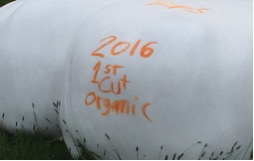Cows and Crops, May 2016

By Rick Kersbergen, Extension Professor, University of Maine Cooperative Extension, richard.kersbergen@maine.edu
In This Issue
- Save the Date: Maine Farm Days 2016, Wednesday & Thursday, August 24 & 25, 2016, Misty Meadows Farm, Clinton, Maine.
Planning is under way for 2016. Hope to see you there! - Time to get ready for first cutting! Some have started already!
- How high (or low) should you cut your forages…and does it matter? (Yes, it does!)
- Never forget about Farm Safety! A recent tragedy should make all farmers take notice!
- Uber for tractors?
- Maine Hay Directory
Time to get ready for first cutting! Some have started already!
Yes…or AT LEAST YOU SHOULD BE THINKING ABOUT IT! You may be plating corn, but you may want to think about your first cutting of haylage.
I have been looking at the maturity of a lot of grasses throughout central and southern Maine and have seen some quick maturing stands. I have seen one farm start and we’re actively mowing on May 16th! See proof below.
How high (or low) should you cut your forages…and does it matter? (Yes, it does!)
A recent article by Tom Kikcer from New York documented the detrimental impacts of setting your mower too low. High ash contents in your forage leads to lots of potential problems, including detrimental impacts on forage fermentation and slow regrowth. Read the article below.
Adapted from Tom Kilcer, May newsletter
So, what is a little dirt in the tons of forage? For starters you have just inoculated a highly digestible, high sugar forage with a range of wild and not so beneficial bacteria and molds. They are not good for your cows or for making silage. Second, Dr. Sniffen of Fencrest LLC found that going from 9 to 11% ash will knock 1.9 pounds of milk off per cow per day. On a 100 cow dairy this is loss of over $11,590 in a 305 day lactation of a high forage diet of 50% legume. I calculated for two mid west farms this year that simple ash levels were costing them $65,000 on one, and $75,000 on the other from lost milk production by feeding 2% more ash. Adjusting cutting height, and/or putting on extended skid plates will leave a taller stubble to allow for tedding plus raking/merging without skyrocketing ash levels.
You need to look at YOUR forage ash samples to see if you are leaving milk in the field by mowing too close. Yes, you can rebalance the ration at the cost of more grain in order to reach the same milk. Even this has its limits as Dr. Sniffen clearly points out: “the NDF concentration will go up; they balance on the presumed analysis and the fact is that the NDF is not really the higher NDF but the lower NDF. Thus they end up with inadequate effective NDF, and the cows get metabolic consequences.”
This intensively managed grass field was cut too short. If it regrows at all, it will have less yield/year and many more weeds than mowing at 4 inches. Adding insult to injury, because of increased ash, it will produce 2 pounds of milk/cow/day LESS than if it was mowed at the optimum height. A grass field should look green when you finish.
Bottom line: flat knives, higher stubble for maximum forage quality. Set for a 3 inch cut height for Alfalfa; 4 inch cut height for grasses. Leaving a higher stubble will also allow for faster regrowth and higher subsequent yields.
Never forget about Farm Safety! A recent tragedy should make all farmers take notice!
A recent tractor tragedy in Aroostook County should be a wake-up call to all farm and machinery operators. Farm accidents happen all too frequently and without warning. Simple steps can help to make you and your employees a little safer. Take some time to be aware of hazards on your farm, including those you don’t always consider…respiratory hazards can be everywhere on the farm. Read the Pennsylvania farm safety team newsletter.
If you have some PTO shaft safety shields that are missing or in need of repair, please let me know. I am coordinating a bulk purchase of universal replacement shield. It could save your life!
Uber for tractors?
What does Uber and Farming have to do with each other? See this interesting article in the Washington Post!
Maine Hay Directory
Did you know that UMaine Extension manages a hay directory for buyers and sellers of hay and hay products? If you have hay or forage to sell, this listing may help you find buyers! If you are interested in posting your products or looking for feed to buy, check out the directory at the Maine Hay Directory.


